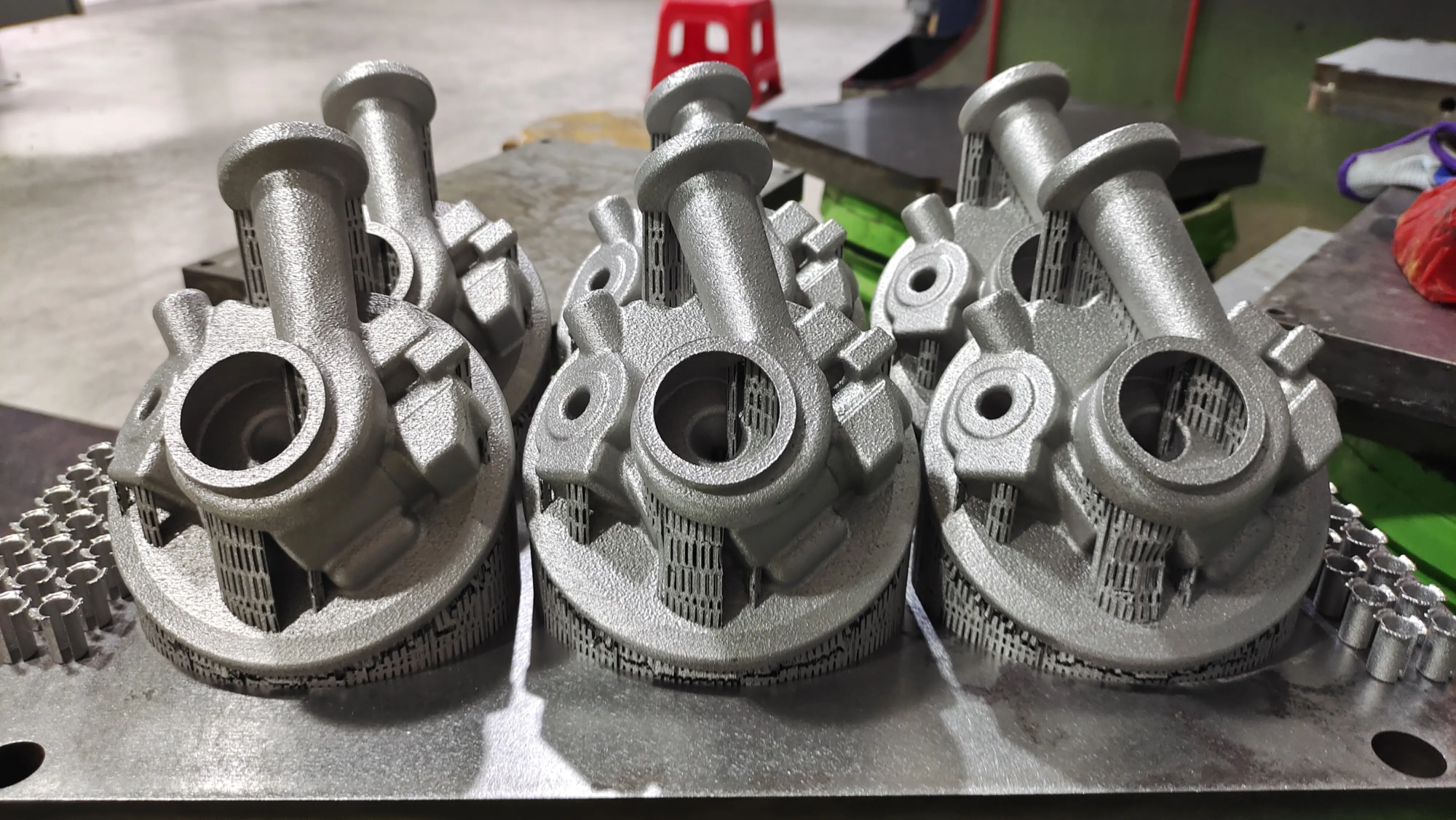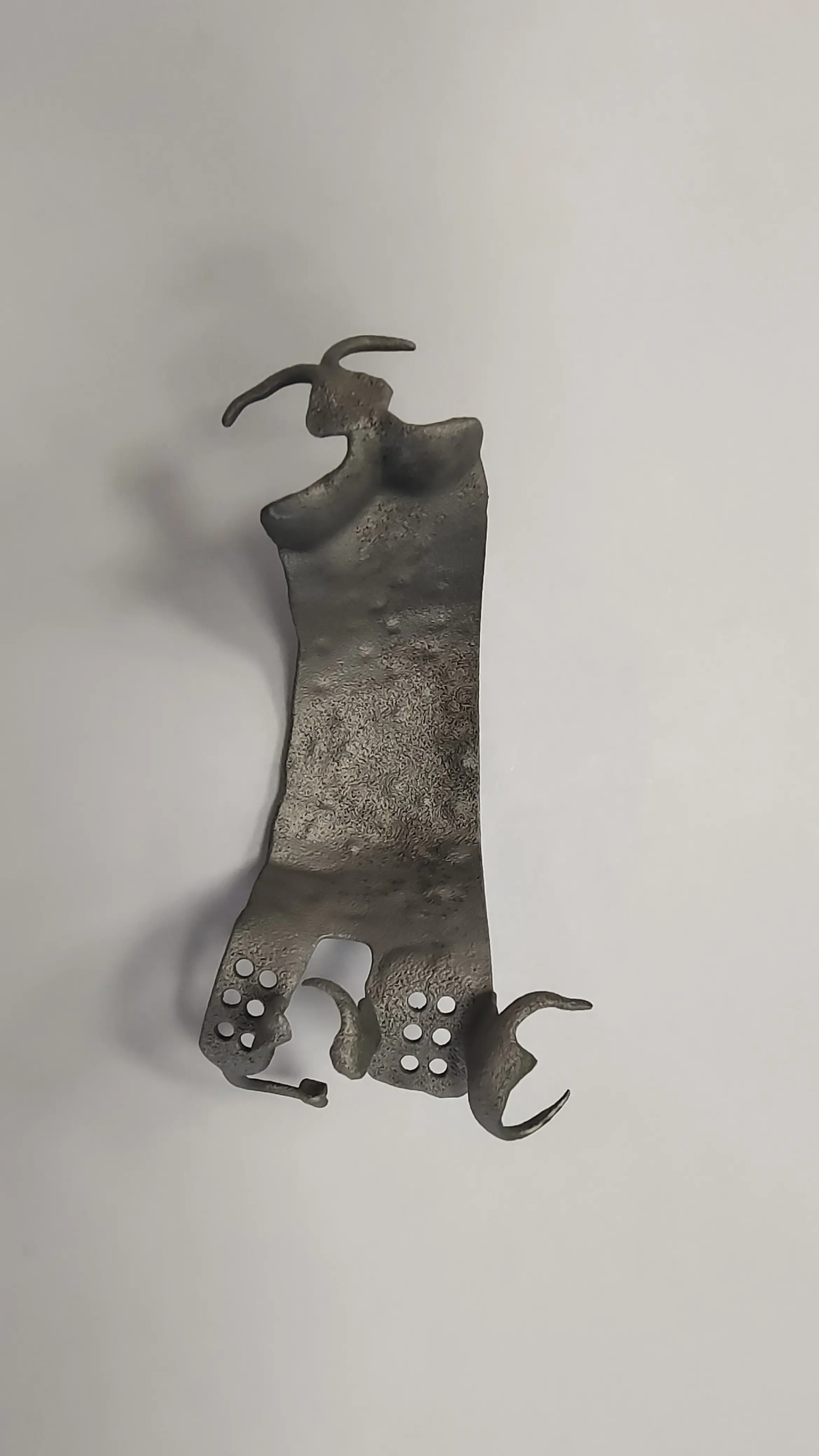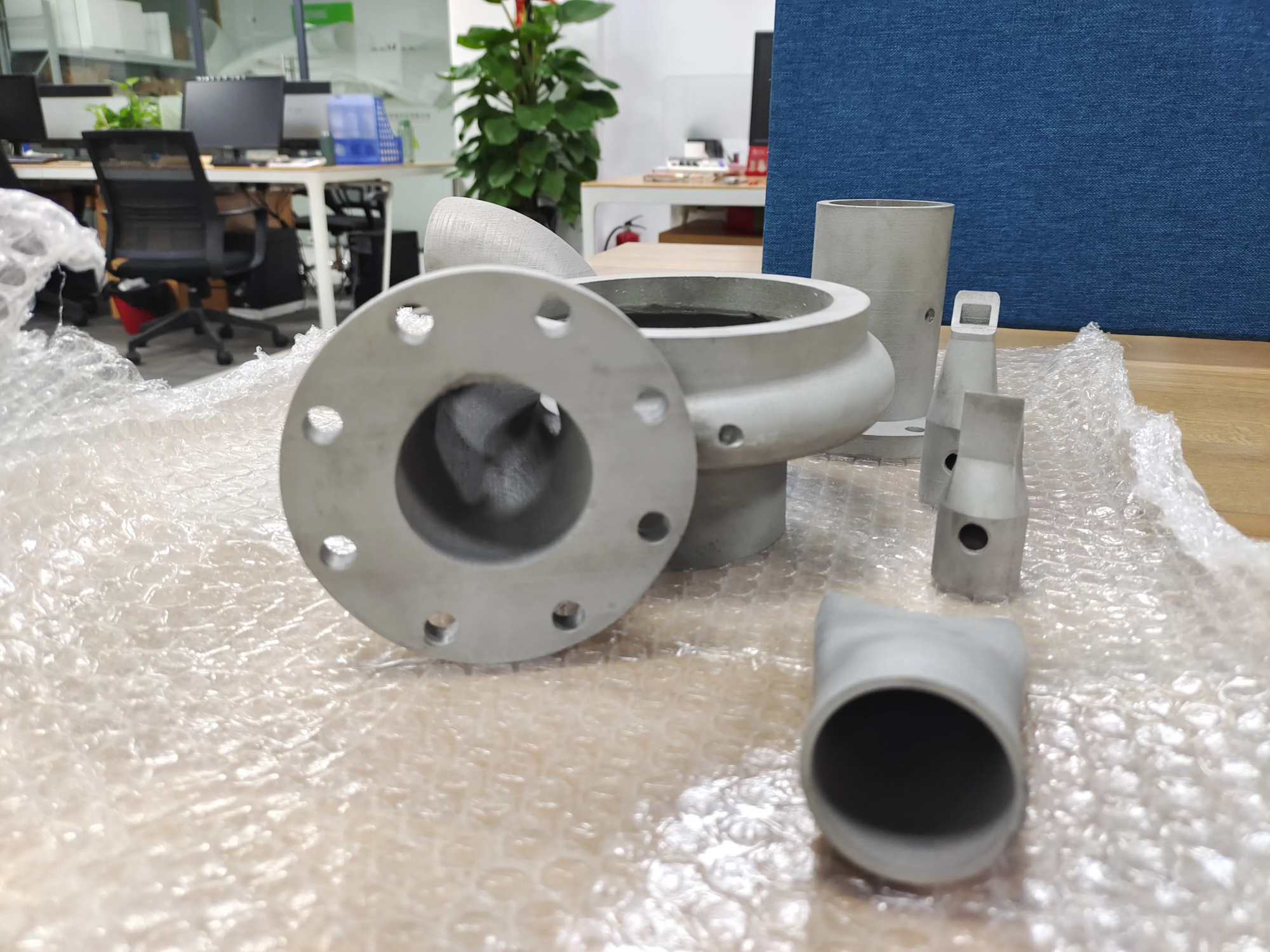Leverage the power of AMS 3D printing: a game-changing fast prototype
The ruthless pursuit of efficiency, accuracy and flexibility drives innovation in the additive manufacturing industry (AM). In recent leap in technology Automated Materials Systems (AMS) Stand out and fundamentally change the way industrial 3D printing works. For engineers, designers and manufacturers facing the pressure to quickly iterate through complex metal parts, AMS integration is not only convenient, but revolutionary. At Greatlight, we have embraced this technology in advanced selective laser melting (SLM) 3D printers, bringing our rapid prototyping service to unprecedented speed, consistency and material versatility.
What exactly is AMS?
Automated Materials Systems are intelligent closed-loop subsystems integrated with industrial 3D printers. Its main role is to manage, store, feed, and frequently recycle original printed materials (whether it is polymer silk or critical industrial applications, exquisite metal powders) with minimal human intervention. Think of it as a complex robot "concierge" For your printer:
- Multi-material management: AMS units typically have multiple sealed bays or cartridges, each containing a different material. This allows the printer to automatically switch between materials during or between builds without operator action.
- Seamless material feeding: The system accurately transports powder or filaments from the storage box to the build chamber of the printer through a sealed route. For metal powders (used in SLM), this treatment is critical to prevent oxidation, contamination and exposure.
- Powder sieving and recycling: The complex AMS unit combines the mechanism of sieving (unplugged) powders with post-construction, removing oversized particles or splashes and precisely fusing them with fresh powder for reuse. This can maximize material utilization and reduce costs.
- Environmental Control: AMS keeps an inert atmosphere (such as argon or nitrogen) around sensitive materials (e.g., reactive metal powders (e.g., titanium, aluminum) to ensure optimal printing conditions and powder integrity.
- Process automation: From initial setup to work completion and cleaning, AMS can automatically handle previously manual, time-consuming and potentially dangerous material handling tasks.
Why AMS is the cornerstone of modern rapid prototyping (especially in Greatlight)
AMS integrates AMS into our Fly4D SLM printers to unlock the tangible, key benefits of customers looking for rapid prototype solutions:
Unrivaled speed and turnaround time:
- Reduce downtime: Automatic material conversion between builds eliminates the time to manually exchange and calibrate new materials. You can queue back to back for homework.
- 24/7 Operation: The system facilitates continuous lighting production. Once verified, the work was unattended overnight, which greatly compressed the development cycle.
- Faster first part: Reduced setup time means your initial prototype starts printing faster.
Unrivaled material versatility and flexibility:
- Multiple substance changes as needed: Need a test batch in stainless steel 316L, then Titanium Ti6al4v? AMS automatically handles the switch. This enables designers to Accurate There is no logistical delay in the expected final material.
- Supports custom materials: Greatlight’s expertise in materials science, combined with AMS, enables us to effectively handle professional or customized alloy powders, which is a key factor in demanding aerospace, medical or automotive applications.
- Material Exploration: Easily iterate the prototype with different materials to test functionality, weight, strength or thermal performance.
Enhanced consistency and repeatability:
- Minimize human error: Automated powder handling and administration ensures precision, with each layer and build using consistent fresh and recycled powders.
- Strict environmental control: Constant inert atmosphere management minimizes powder oxidation and contamination throughout storage and processing, resulting in superior mechanical properties and partial repeatability.
- Optimized powder quality: Integrated screening and recycling ensures that only powders meet strict size and quality specifications can enter the build chamber.
Reduce operating costs and material waste:
- Maximize powder recycling: AMS systems effectively recover unused powders (for aluminum or titanium (such as aluminum or titanium), >95% >95% compared to systems with ineffective recycling.
- Lower labor costs: Automation reduces the need for constant operator supervision during material handling and work switching.
- Reduce waste: Accurate dosage and pollution prevention minimize unusable amounts of powder.
- Safer operations:
- contain: Treating fine metal powders, especially reactive powders, can pose health and explosion risks. AMS provides a fully enclosed system that protects the operator.
- Controlled atmosphere: The inert environment within the AMS and printers prevent fire hazards associated with the reacted metal.
Greghime: Delivering end-to-end AMS enhanced fast prototype
As a leading rapid prototyping manufacturer from China, Greatlight leverages our Advanced Fly4D SLM 3D printer equipped with powerful AMS technology as the basis for our services. But we are more than just printing:
- Seamless integration: Our AMS workflow is fully integrated into our One-stop service. From receiving your CAD files, material selection, powered by AMS to print to full Post-processing (pressure relief, support measures, heat treatment, CNC machining finish, polishing, anodizing, electroplating) and strict quality inspection – we all manage.
- Material expertise: We know that the material is the king. Our team has a deep knowledge in a variety of metal powders (stainless steel, tool steel, aluminum alloy, titanium alloy, nickel superalloy, copper) and, crucially, our AMS’s ability to effectively manage custom alloy formulas.
- Focus on precision and speed: The efficiency of AMS is translated directly into faster quotes, faster production and reaching the most pressing deadlines without compromising Precise processing Quality required for functional prototypes and end-use parts.
- Scale and accessibility: Whether you need a single complex prototype or a low-volume production run, Greglight offers Custom precision machining exist The best priceSupported by reliability and scalability, AMS provides it.
in conclusion
Automated Materials Systems (AMS) not only stands for automation; it represents a paradigm transfer of industrial 3D printing efficiency, material utilization, safety and flexibility. For rapid prototyping, these benefits are transformative. Reduced lead time, seamless multi-material capability, enhanced part consistency, and substantial material cost savings directly address the core challenges faced by engineers and designers.
At Greatlight, integrating AMS technology with state-of-the-art SLM printers is not just an upgrade, but a commitment to delivering the fastest, most reliable, most reliable, and highest quality fast prototyping services. We combine this technical strength with deep material knowledge and comprehensive post-processing to provide a truly one-stop solution. When you work with Greatlime for the next rapid metal prototyping project, you will leverage the cutting-edge of AM Technology to bring innovative designs faster and more efficient than ever.
FAQ: AMS 3D Printing and Greatlight Services
Q1: What exactly does AMS do in 3D printers?
Answer: AMS stands for automatic material system. It automatically handles the storage, feeding, recycling and environmental control of printed materials (Powder of SLM) (such as inert gases). It minimizes manual intervention, allowing automatic switching between materials, saving time, reducing waste and ensuring consistent quality.
Question 2: How does AM specifically improve the rapid prototyping process?
Answer: Key improvements include:
- speed: Use close to zero downtime between builds between different materials; enable queueing and lighting operations.
- flexibility: Effortlessly use multiple metal prototypes (e.g., test stainless steel with titanium quickly).
- consistency: Automated powder handling minimizes errors and contamination.
- Cost Efficiency: High powder recovery (many metals > 95%) reduces material costs.
- Safety: The sealing system contains potentially dangerous metal powders.
Q3: Can AMS safely treat reactive metal powders such as titanium or aluminum?
Answer: Absolute. The core function of the industrial AMS unit integrated with SLM printers is to maintain a tightly controlled inert atmosphere (using argon or nitrogen) during storage, transmission and printing. This effectively eliminates oxidation and fire risks, which makes the reactive alloys safe and high-quality processing procedures routine. Greglight’s AMS-equipped Fly4D printer is designed specifically for this.
Q4: Which metal materials can be reviewed using an AMS-equipped printer?
A: We use a variety of materials, including but not limited to:
- Stainless steel (316 liters, 17-4ph, 15-5ph)
- Tool Steel (H13, M2, Maraging Steel)
- Aluminum alloy (Alsi10mg, Alsi7mg, ScalMalloy®)
- Titanium alloy (Ti6al4v, ti6al4v eli, ti cp)
- Superalys based on nickel (Inconel 625, Inconel 718)
- Copper alloy (pure Cu, Cucrzr)
- Customized materials: We also have the expertise to evaluate and handle custom alloy formulations. Contact us to discuss your specific needs.
Q5: How does Greatlight ensure the quality when using AMS and regenerated powder?
Answer: Quality is crucial. Our process includes:
- Strict powder management: Integrated AMS sieving ensures reused powders only in the specified particle size distribution.
- Precise mix: Controlled ratios of fresh and recycled powders maintain consistent powder properties.
- Inert atmosphere: Continuous gas control prevents oxidation/degradation.
- Strict test: We perform regular chemical analysis and fluidity testing of powders.
- Process control: Calibrate laser parameters and build monitoring to ensure part quality.
- Post-processing and inspection: The finished parts are subject to the necessary modification (heating, machining) as well as thorough dimensioning and mechanical testing of each specification.
Question 6: Is there a minimum order quantity (MOQ) for custom rapid prototyping on Greatlight?
A: One of the key advantages of rapid prototyping with AMS is its low volume efficiency. At Greatlight, we focus on adaptation Small batch and single-piece orders. We understand that prototypes are usually small. Regardless of the order size The best price Even for custom single-unit prototypes. Please contact you for your project details for an accurate quote.





